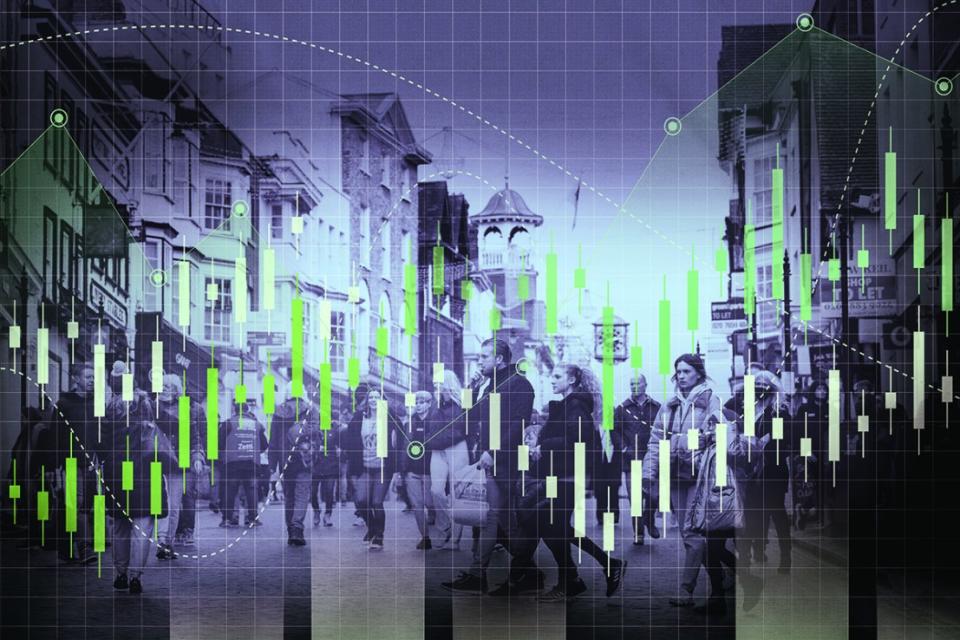On the whole, the economy is on the up – but only just

UK economy watchers had a busy week last week with a series of high-profile data releases to digest.
May’s inflation figures were released on Wednesday just a day before the Bank of England’s latest interest rate decision, but it was Friday’s clutch of figures that gave a number of commentators pause for thought as they consider the UK’s growth prospects for the coming year.
The UK reported surprisingly strong growth in the first quarter of this year, outpacing every other G7 economy. However, recent figures have been less positive. April’s GDP figures, for example, showed that the economy was stagnant – raising questions about the strength of the UK’s economic recovery.
Friday’s batch of data, however, provided some clues as to what’s really going on. The Office for National Statistics (ONS) released its retail sales figures for May, which were very upbeat.
The data showed that sales volumes jumped 2.9 per cent in May, comfortably ahead of expectations and more than offsetting the surprisingly large fall in April.
April’s big fall was largely driven by the wet weather, according to the ONS, and so May’s better weather was given some of the credit. But analysts were quick to point to improving consumer sentiment as households continue to recover from the cost-of-living crisis.
The volatility of monthly figures shows an economy that needs reform to get it firing again
“The strength was broad-based across the retail sector including online suggesting an underlying strengthening in sales beyond weather effects,” Andrew Wishart, senior UK economist at Capital Economics noted.
Reinforcing the retail strength, GfK’s consumer confidence figures showed that consumer confidence rose to its highest level since November 2021 in May, albeit still strongly in negative territory.
Coming just a few days after inflation touched two per cent and the Bank of England suggested that an August rate cut was looking likely, many economists found a good case for optimism.
But then there was S&P’s latest purchasing managers’ index (PMI), conducted in June, which measures activity in the private sector and is generally seen as a good indicator of growth.
The PMI showed that output had dropped to the lowest level since November. It fell to 51.7 in June, down from 53.0 in May and well below expectations. The slowdown was driven by slower performance in the UK’s all-important service sectors, which includes the retail sector.
So, are things getting better or worse for the economy?
On one level there’s a question of timing. June’s PMI is (obviously) later than May’s retail sales, so presumably both could be true. But it would seem odd for one measure to point to a strong recovery which is then almost entirely wiped out the very next month.
Rob Wood, chief UK economist at Pantheon Macroeconomics, said the strength in retail sales made him “sceptical” that growth had “suddenly slowed”.
More likely is that June’s PMI was impacted by the election. Indeed, the survey showed that political uncertainty was contributing to the slowdown.
Chris Williamson, chief business economist at S&P Global Market Intelligence, said many firms were seeing a “hiatus” in decision-making as they await clarity on various aspects of economic policy.
The survey suggested that new business orders remained fairly consistent in June, suggesting that growth could return in the months ahead.
“The PMI fall is an election-related blip,” Pantheon’s Wood said. “The UK is growing fine”.
‘Fine’ is about right.
If you take the average of the last three PMIs, then the UK is on track to grow about 0.2 per cent in the second quarter, which is not exactly going to set the world alight.
The retail sales figures have also been extremely volatile in recent months, with a large fall in sales volumes swiftly followed by a slightly larger recovery. The underlying trend is positive, but it is slow progress.
Looking through the volatility of monthly figures shows an economy that needs reform to get it firing on all cylinders again.

 Yahoo Finance
Yahoo Finance 